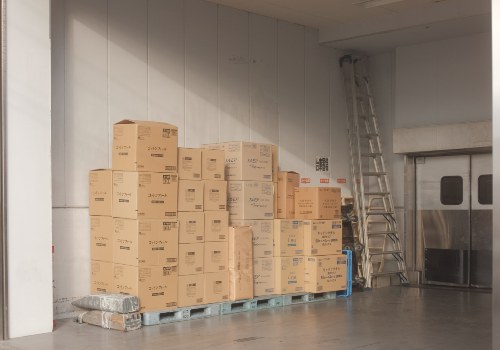External storage is common practice for a wide range of businesses and properties. It’s the storage for various business essentials; including raw materials, partly manufactured products, finished products, flammable liquids, and gases. While this storage method offers convenience, it also presents significant risk. The potential ignition of combustible material, as well as security and theft are areas identified by risk analysis and insurers.
Below, Romero Insurance Brokers we will explore these risks and highlight essential safety measures to protect your assets and business.
What is the risk of externally storing combustible materials
Externally stored goods face potential ignition from accidental or deliberate acts. This could be malicious acts by vandals or arsonists, carelessly discarded smoking materials, heat, sparks, and stray fireworks.
Spontaneous combustion of oil-contaminated waste, organic matter, and other susceptible materials is also possible. There is a concern of fire spread from adjacent buildings, plant areas, and vehicles, which could result in substantial losses.
Methods to help prevent ignition of combustible materials
To reduce the risk of combustion, consider implementing these ten risk control measures:
10 risk controls measures to help prevent external storage combustion:
- Prohibit smoking: Strictly prohibit smoking or designate external smoking shelters away from property.
- No Burning of Waste: Enforce a complete ban on burning waste materials on the premises.
- Adequate Control of Contractors: Implement Hot Work permits to ensure proper control of contractors.
- Secure Perimeter Fencing and Locked Gates: Install secure perimeter fencing and keep gates locked to prevent unauthorized access to storage areas.
- Strategic Location of Storage: Place storage away from the perimeter of the site to minimize the risk of outsiders introducing lit materials.
- Monitored CCTV and Site Security Guards: Install monitored CCTV cameras or employ on-site security guards to detect site intrusion and prevent unauthorized access before a fire starts.
- Secure Lids on Skips: Securely seal lids on skips and waste containers to prevent ignited materials from being introduced into combustible waste.
- Adequate Storage Conditions for Gases: Store gases in appropriate secured cages or enclosures, away from potential ignition sources, with good ventilation and shaded from direct sunlight.
- Contingency Plan: Make sure there is a robust fire risk assessment, and guidance on how to safely storage flammable materials.
- Training: Ensure staff are trained in how and where to externally store flammable materials.
Methods to Reduce Spread of a Storage Fire
Where there is a risk, there is always a possibility a fire could happen, even if all control measures are met. If this worst case scenario were to happen, operators can still prepare their property to ensure the damage is minimised and limit the spread of fire by adopting the following 5 measures:
4 ways to reduce spread of external storage fire
Monitored CCTV and On-Site Guards: Employ monitored CCTV or on-site guards to quickly discover and report fires, enabling timely control before they spread to buildings.
- Secure Fireproof Lids on Skips and Bins: Securely seal lids on skips and bins will restrict oxygen, suffocating the fire.
- Minimize External Storage: Keep external storage to a minimum to limit fuel for fires and reduce their potential to spread.
- Maintain Safe Distance from Buildings: Ensure external storage locations for combustible materials are at a sufficient distance from buildings and other property to prevent fire spread.
- Practice Good Housekeeping: Maintain clear spaces between stored goods and regularly remove waste packaging and other loose combustible materials to minimize fire spread.
What's a Safe Distance for Combustible Materials away from Buildings:
As a general rule, it is recommended to keep combustible materials at least 5 meters away from buildings.
Individual risk factors must be considered, such as the volume of external storage, building construction material, and the fire risk. In some cases, exceptions may be allowed, but these should involve appropriate consultation with a Risk Control Surveyor to ensure safety and compliance. Contact your account handler at Romero Insurance Brokers to see if your external storage situation is acceptable, feel free to send pictures or ask for a consultation.
The importance of monitoring control measures for external storage
Implementing proper risk control measures is crucial for safely storing combustible materials. By being proactive in prevention and containment, you can significantly reduce the risk of fire and limit the spread of fires.
Stay informed, follow best practices, and consult with risk experts to maintain a safe storage environment and ensure your business keeps trading. Contact Romero Insurance Brokers to get started and continue receiving updates.



